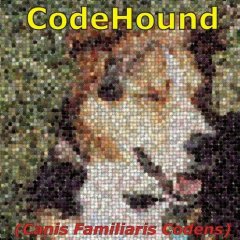Leaderboard
Popular Content
Showing content with the highest reputation since 11/28/2025 in all areas
-

Control Splitter - window Splitters for controls
ioa747 and 2 others reacted to musicstashall for a topic
I present to your attention an alternative version of the window dividers CtrlSplitter. The Static element is used as a splitter separator, and the functioning of the separators is fully implemented in their window procedure. Example.au3 CtrlSplitNotify.au3 CtrlSplit.au3 ApiDPI.au33 points -

AutoIt Snippets
CYCho and 2 others reacted to argumentum for a topic
How do you translate "Desktop" to the user's language ? #include <WinAPIRes.au3> Exit ConsoleWrite(@CRLF & '>' & _LoadString_shell32(4162) & '<' & @CRLF & @CRLF) Func _LoadString_shell32($iID) ; 4162 = "Desktop" Local $sText = "", $hInstance = _WinAPI_LoadLibraryEx("shell32.dll", $LOAD_LIBRARY_AS_DATAFILE) If $hInstance Then $sText = _WinAPI_LoadString($hInstance, $iID) _WinAPI_FreeLibrary($hInstance) EndIf Return SetError(@error, @extended, $sText) EndFunc ;==>_LoadString_shell32 If your GUI is simple, you may just find all the strings you use in shell32.dll3 points -

Open Password Manager Project
GiuseppeCatania and one other reacted to Werty for a topic
Please make a folder with all the files and then zip the whole folder and upload it, as it is now people have to first make a folder, then download 7 files into it, very few is gonna be bothered with that. Just if you want as much response as possible.2 points -

Guiscape -- A new GUI builder project!
argumentum reacted to jaberwacky for a topic
Just posting an update of what I have done. Just pretty much brought it back to where it was before I started the rewrites. Guiscape.zip1 point -

Flat Custom Buttons with NM_CUSTOMDRAW
WildByDesign reacted to Nine for a topic
Yes, that is kind of annoying. To test equality, you need to use $SB_UTF16LE but to write in console $SB_UTF16BE prints correctly. Since AscW only checks only the first character, theoretically it could lead to error...1 point -

why in oneventmode not write inifile ?
argumentum reacted to MoriceGrene for a topic
I understand your point, and thank you for your time and advice. There was probably a misunderstanding: my intentions were good, just like yours. After checking more carefully, I found that the issue was not related to AutoIt nor to the behavior of my script, but simply to an incorrect tab selection that prevented the code from working properly. From my point of view, if possible, this thread can be removed as well, since it’s not really useful to anyone. I apologize again for opening the topic too hastily without double-checking the code first. Thanks again, and have a nice day!1 point -

Flat Custom Buttons with NM_CUSTOMDRAW
WildByDesign reacted to Nine for a topic
AFAIK, not possible with ConsoleWrite. But if you want to check the wide char, you can use something like this : If StringToBinary(GUICtrlRead($tInfo.IDFrom), $SB_UTF16LE) = 0xE248 Then ; do something here EndIf1 point -

why in oneventmode not write inifile ?
MoriceGrene reacted to argumentum for a topic
That sounds more like a non-apology than one. And I'll take offence on his behalf because he did answer your post with good advise ( even if not what you expected ). The best you can do is to ... do what I asked before. Maybe is a problem in AutoIt, maybe is a problem with the your script code. We would welcome a detailed account of, piece by piece of your code, to pin point the exact issue. Do remember that we dedicate time and answer, out of the goodness of our hearts, and nothing else1 point -

Open Password Manager Project
argumentum reacted to GiuseppeCatania for a topic
Thank you for the tip!1 point -
Thanks for the kind words Here is an example I just scripted to synchronize in real-time the Listview horizontal scrolling with a "detached" header control. Hope it will work by your side, fingers crossed... #include <WindowsConstants.au3> #include <GUIConstantsEx.au3> #include <GuiListView.au3> ; DPI DllCall("User32.dll", "bool", "SetProcessDpiAwarenessContext" , "HWND", "DPI_AWARENESS_CONTEXT" -2) Opt("MustDeclareVars", 1) ;0=no, 1=require pre-declaration Global $g_hGUI, $g_hChild, $g_hHeader, $g_hListview Example() Func Example() $g_hGUI = GUICreate("Example", 400, 400, -1, -1, $WS_OVERLAPPEDWINDOW, $WS_EX_COMPOSITED) GUISetBkColor(0x202020) GUISetState(@SW_SHOW, $g_hGUI) $g_hChild = GUICreate("ChildWindow", 320, 320, 40, 40, $WS_CHILD, -1, $g_hGUI) GUISetBkColor(0x606060) ; $g_hHeader = _GUICtrlHeader_Create($g_hChild) $g_hHeader = _GUICtrlHeader_Create($g_hChild, BitOr($HDS_BUTTONS, $HDS_HOTTRACK)) ; without $HDS_DRAGDROP in this example _GUICtrlHeader_AddItem($g_hHeader, "Column1", 100) _GUICtrlHeader_AddItem($g_hHeader, "Column2", 200) _GUICtrlHeader_AddItem($g_hHeader, "Column3", 300) Local $idListview = GUICtrlCreateListView("col1|col2|col3 ", 0, 24, 320, 295, _ BitOR($GUI_SS_DEFAULT_LISTVIEW, $LVS_NOCOLUMNHEADER), BitOR($LVS_EX_DOUBLEBUFFER, $LVS_EX_FULLROWSELECT)) $g_hListview = GUICtrlGetHandle($idListview) For $i = 1 To 30 GUICtrlCreateListViewItem("item" & $i & "-1|item" & $i & "-2|item" & $i & "-3", $idListview) Next ; resize listview columns to match header widths _resizeLVCols() GUISetState(@SW_SHOW, $g_hChild) ; get rid of dotted rectangle in listview, when an item got the focus GUICtrlSendMsg($idListview, $WM_CHANGEUISTATE, 65537, 0) GUIRegisterMsg($WM_NOTIFY, WM_NOTIFY) While 1 Switch GUIGetMsg() Case $GUI_EVENT_CLOSE ExitLoop EndSwitch WEnd _GUICtrlHeader_Destroy($g_hHeader) GUIDelete($g_hChild) GUIDelete($g_hGUI) EndFunc ;==>Example Func _resizeLVCols() For $i = 0 To _GUICtrlHeader_GetItemCount($g_hHeader) - 1 _GUICtrlListView_SetColumnWidth($g_hListview, $i, _GUICtrlHeader_GetItemWidth($g_hHeader, $i)) Next EndFunc ;==>_resizeLVCols Func _resizeHeaderItems() Local $aRect For $iSubItem = 0 To _GUICtrlListView_GetColumnCount($g_hListView) - 1 If $iSubItem Then $aRect = _GUICtrlListView_GetSubItemRect($g_hListView, 0, $iSubItem) Else $aRect = _GUICtrlListView_GetItemRect($g_hListView, 0, 2) ; 2 = bounding rectangle of the item text EndIf _GUICtrlHeader_SetItemWidth( $g_hHeader, $iSubItem, $aRect[2] - (($aRect[0] > 0) ? $aRect[0] : 0) ) Next EndFunc ;==>_resizeHeaderItems Func WM_NOTIFY($hWnd, $iMsg, $wParam, $lParam) #forceref $hWnd, $iMsg, $wParam Local $tNMHDR = DllStructCreate($tagNMHDR, $lParam) Local $hWndFrom = HWnd(DllStructGetData($tNMHDR, "hWndFrom")) Local $iCode = DllStructGetData($tNMHDR, "Code") Switch $hWndFrom Case $g_hHeader Switch $iCode Case $HDN_ITEMCHANGED, $HDN_ITEMCHANGEDW _resizeLVCols() EndSwitch Case $g_hListView Switch $iCode Case $LVN_ENDSCROLL Local Static $tagNMLVSCROLL = $tagNMHDR & ";int dx;int dy" Local $tInfo = DllStructCreate($tagNMLVSCROLL, $lParam) If $tInfo.dy = 0 Then ; ListView horizontal scrolling _resizeHeaderItems() EndIf EndSwitch EndSwitch Return $GUI_RUNDEFMSG EndFunc ;==>WM_NOTIFY Edit; it seems to be a good start, unfortunately it's not enough...1 point
-
The good part is that I was able to end up doing all of the dragging, sorting, etc. successfully. It was a fun learning experience and worked really, really well in the end. The bad part is that I was never able to solve this part. I could not even think of any ideas to try. But after some time thinking about it, I was thinking that it may not even be worth doing. At least for the time being, I am going to have to scrap my file manager for AutoIt project. I made no progress in like two or three days, so it's probably time to move on to something else for now and maybe come back to it later. Thank you for everything that you have done to help, @pixelsearch. You've been a great help with so many of my projects.1 point
-

OpenCV v4 UDF
ioa747 reacted to auto-it-tous for a topic
Thanks for your help. I got it. because i download the file "node-autoit-opencv-com-2.8.0.zip" i think it is sample and all of files. So i can not found it.1 point -

Help File/Documentation Issues. (Discussion Only)
argumentum reacted to ioa747 for a topic
I thought you were looking for it.1 point -
Hello. I was trying your penultimate script above and could improve it a bit (no more Adib but $HDN_ENDTRACK changed to $HDN_ITEMCHANGED, added _GUICtrlHeader_Destroy) etc... The problem with a separate header control is that you'll have to add plenty of code in your script to get (nearly) the same results as a native Listview control (which takes care of its native header items), this means sorting listview columns by clicking their headers, changing header items order by dragging a header item at the left or right of another, double-clicking a header separator etc...) For example, in my script below, please notice what will happen when you enlarge a header item : an horizontal scrollbar will appear in the listview. Now when you scroll horizontally, the headers items won't align the listview columns, so you'll have to take care of this part too etc... Of course all these points could be fixed with additional code, it's up to you to decide if you're ready to add all this code to avoid flicker. #include <WindowsConstants.au3> #include <GUIConstantsEx.au3> #include <GuiListView.au3> ; DPI DllCall("User32.dll", "bool", "SetProcessDpiAwarenessContext" , "HWND", "DPI_AWARENESS_CONTEXT" -2) Opt("MustDeclareVars", 1) ;0=no, 1=require pre-declaration Global $g_hGUI, $g_hChild Global $g_hHeader, $g_idListview Example() Func Example() $g_hGUI = GUICreate("Example", 400, 400, -1, -1, $WS_OVERLAPPEDWINDOW, $WS_EX_COMPOSITED) GUISetBkColor(0x202020) GUISetState(@SW_SHOW, $g_hGUI) $g_hChild = GUICreate("ChildWindow", 320, 320, 40, 40, $WS_CHILD, -1, $g_hGUI) GUISetBkColor(0x606060) $g_hHeader = _GUICtrlHeader_Create($g_hChild) _GUICtrlHeader_AddItem($g_hHeader, "Column1", 100) _GUICtrlHeader_AddItem($g_hHeader, "Column2", 100) _GUICtrlHeader_AddItem($g_hHeader, "Column3", 100) $g_idListview = GUICtrlCreateListView("col1|col2|col3 ", 0, 24, 320, 295, BitOR($GUI_SS_DEFAULT_LISTVIEW, $LVS_NOCOLUMNHEADER), BitOR($LVS_EX_DOUBLEBUFFER, $LVS_EX_FULLROWSELECT)) For $i = 1 To 30 GUICtrlCreateListViewItem("item" & $i & "|item" & $i & "|item" & $i, $g_idListview) Next ; resize listview columns to match header widths _resizeLVCols() GUISetState(@SW_SHOW, $g_hChild) ; get rid of dotted rectangle on listview, when an item got the focus GUICtrlSendMsg($g_idListview, $WM_CHANGEUISTATE, 65537, 0) GUIRegisterMsg($WM_NOTIFY, WM_NOTIFY) While 1 Switch GUIGetMsg() Case $GUI_EVENT_CLOSE ExitLoop EndSwitch WEnd _GUICtrlHeader_Destroy($g_hHeader) ; added GUIDelete($g_hChild) GUIDelete($g_hGUI) EndFunc ;==>Example Func _resizeLVCols() For $i = 0 To _GUICtrlHeader_GetItemCount($g_hHeader) - 1 _GUICtrlListView_SetColumnWidth($g_idListview, $i, _GUICtrlHeader_GetItemWidth($g_hHeader, $i)) Next EndFunc ;==>_resizeLVCols Func WM_NOTIFY($hWnd, $iMsg, $wParam, $lParam) #forceref $hWnd, $iMsg, $wParam Local $tNMHDR = DllStructCreate($tagNMHDR, $lParam) Local $hWndFrom = HWnd(DllStructGetData($tNMHDR, "hWndFrom")) Local $iCode = DllStructGetData($tNMHDR, "Code") Switch $hWndFrom Case $g_hHeader Switch $iCode Case $HDN_ITEMCHANGED, $HDN_ITEMCHANGEDW _resizeLVCols() EndSwitch EndSwitch Return $GUI_RUNDEFMSG EndFunc ;==>WM_NOTIFY1 point
-
As an example of an x86 application, I chose Au3Info.exe and it worked normally without double quotes even though the path has blank characters Here I must emphasize that at the beginning I entered the 4-digit 'Hello PIN' and it did not work, I had to enter the Admin Password With Windows 11 Pro, Version: 25H2 #AutoIt3Wrapper_UseX64=y #include <AutoItConstants.au3> RunAsAdmin() Func RunAsAdmin() ; Change the username and password to the appropriate values for your system. Local $sUserName = "ElevateUser" Local $sDomain = @ComputerName Local $sPassword = "ElevatePassword" Local $sProgram = "C:\Program Files (x86)\AutoIt3\Au3Info.exe" Local $Status $Status = FileExists($sProgram) ConsoleWrite("Program:" & $sProgram & @CRLF) ConsoleWrite("Status: " & $Status & @CRLF) ; Run Notepad with the window maximized. Notepad is run under the user previously specified. Local $iPID = RunAs($sUserName, $sDomain, $sPassword, $RUN_LOGON_PROFILE, $sProgram, "", @SW_SHOWMAXIMIZED) ConsoleWrite("PID: " & $iPID & @CRLF) EndFunc ;==> RunAsAdmin Output : Program:C:\Program Files (x86)\AutoIt3\Au3Info.exe Status: 1 PID: 67561 point
-

Windows x64
VeeDub_1 reacted to argumentum for a topic
..tested in 25H2 and I did not get it do run as admin. In any case, when I need to run as admin, I add it to task scheduler and save the user/pass there. "UAC Pass - bypass UAC prompts only for specific programs" may just do that you need.1 point -

lists the system libraries (DLLs), which have functions
argumentum reacted to ioa747 for a topic
I recently read How do I find which Dlls contain specific W32 functions ? and I found this: // Source - https://stackoverflow.com/questions/21565739/how-do-i-find-which-dlls-contain-specific-w32-functions // Posted by noseratio, modified by community. See post 'Timeline' for change history // Retrieved 2025-11-30, License - CC BY-SA 3.0 for %f in (%windir%\system32\*.dll) do dumpbin.exe /exports %f >>%temp%\__exports which however gave me a single file with 412000 lines, really, difficult to sort and explore so I used Autoit to extract information only for dlls that have at least one function, (2645 files in total) and to extract, in a subfolder of the script, for each dll a txt file with the name of the dll and the number of functions e.g. for AddressParser.Dll it makes AddressParser(18).txt with the help of dumpbin.exe (external tool from the Visual Studio SDK). for anyone with a curiosity for exploration ; https://www.autoitscript.com/forum/topic/213347-lists-the-system-libraries-dlls-which-have-functions/ ;---------------------------------------------------------------------------------------- ; Title...........: Print-all-dlls.au3 ; Description.....: The script lists the system libraries (DLLs), which have functions, ; using the external tool dumpbin.exe (from the Visual Studio SDK). ; AutoIt Version..: 3.3.18.0 Author: ioa747 Script Version: 0.2 ; Note............: Testet in Windows 11 Pro 24H2 Date:30/11/2025 ; Info............: https://learn.microsoft.com/en-us/cpp/build/reference/dumpbin-reference?view=msvc-170 ;---------------------------------------------------------------------------------------- #AutoIt3Wrapper_Au3Check_Parameters=-d -w 1 -w 2 -w 3 -w 4 -w 5 -w 6 -w 7 #RequireAdmin #include <File.au3> _Print_all_dlls() Func _Print_all_dlls($iNumFunctionsLimit = 0) ; The path to dumpbin.exe. <- Put your own path. 👈 Local Const $sDumpBinPath = "C:\Program Files\Microsoft Visual Studio\2022\Community\VC\Tools\MSVC\14.44.35207\bin\Hostx64\x86\dumpbin.exe" If Not FileExists($sDumpBinPath) Then Exit MsgBox(16, "Error", "Could not find dumpbin.exe path in " & @CRLF & $sDumpBinPath) Local $sSystemDir = @SystemDir Local $sSystemDirLen = StringLen($sSystemDir) ConsoleWrite("System Directory: " & $sSystemDir & ", Length: " & $sSystemDirLen & @CRLF) ; Remove older output directory if already exist (in ScriptDir) Local Const $sOutputDir = @ScriptDir & "\DllExportsAnalysis\" If FileExists($sOutputDir) Then DirRemove($sOutputDir, $DIR_REMOVE) DirCreate($sOutputDir) ; Find all DLL files in the system directory, recursively searching subfolders. Local $aDllFiles = _FileListToArrayRec($sSystemDir, "*.dll", $FLTAR_FILES, $FLTAR_RECUR, $FLTAR_SORT, $FLTAR_FULLPATH) If IsArray($aDllFiles) Then Local $iTotalFiles = $aDllFiles[0] ConsoleWrite("Found " & $iTotalFiles & " DLL files." & @CRLF) ; Loop through each found DLL For $i = 1 To $iTotalFiles ; <- Change $iTotalFiles to 10 for limited testing. 👈️ Local $sFullDllPath = $aDllFiles[$i] Local $iNumFunctions = 0 Local $sTempFile = @ScriptDir & "\temp_dump.tmp" ; Execute dumpbin.exe and capture the output RunWait($sDumpBinPath & ' /exports /OUT:"' & $sTempFile & '" "' & $sFullDllPath & '"', "", @SW_HIDE) Local $sDumpOutput = FileRead($sTempFile) Local $aMatches = StringRegExp($sDumpOutput, '(\d+)\s+number of functions', 3) If IsArray($aMatches) Then ; The first captured group (index 0) is the number of functions $iNumFunctions = Number($aMatches[0]) EndIf If $iNumFunctions > $iNumFunctionsLimit Then Local $sBaseName = StringTrimRight(StringTrimLeft($sFullDllPath, $sSystemDirLen + 1), 4) $sBaseName = StringReplace($sBaseName, "\", "_") Local $sFinalOutputPath = $sOutputDir & $sBaseName & "(" & $iNumFunctions & ").txt" FileWrite($sFinalOutputPath, $sDumpOutput) ConsoleWrite("- SUCCESS - " & $sFullDllPath & " -> Functions: " & $iNumFunctions & @CRLF) Else ConsoleWrite("+ SKIPPED - " & $sFullDllPath & " - Functions: 0" & @CRLF) EndIf FileDelete($sTempFile) Next MsgBox(0, "Script Complete", "Analysis finished. Check the results in: " & $sOutputDir) Else MsgBox(16, "Error", "Could not find DLL files in " & $sSystemDir & ". Check permissions or path.") EndIf EndFunc ;==>_Print_all_dlls Please, every comment is appreciated! leave your comments and experiences here! Thank you very much1 point -

GUIFrame UDF - Melba23 version - 19 May 14
WildByDesign reacted to Melba23 for a topic
WildByDesign, Rainy day forecast tomorrow - something to keep me occupied! M231 point -
1 point
-
I'm not familiar with webdriver, and I'm unable to test at the moment. But I'll bet that you can encrypt my original helloworld example just fine. One quick test would be to disable the option Remove orphaned globals and UDFs under the SingleBuild tab. You should start by doing a BackTranslate (no encryption), and check MCF0test output from that. Only if that works normally should you attempt encryption. More generally. both in BackTranslate and Encrypt, you can try to identify the problem by working in stages. You start with a working example like helloworld, and gradually add/replace more functionality from the script you wish to process(see Tab Encrypt, button UDFs). If the issue occurs only when encrypting, you can target each individual function for encryption, so with sequential testing you should be able to narrow down where the problem lies. 1.Backtranslate my helloworld, check that output works 2. Encrypt my helloworld, check again 3.Backtranslate webdriver demo, check again if it doesn't work, and you can't tell where it fails, move independent parts into helloworld step by step, and repeat. 4. If BackTr works, but encrypt does not, even with orphan removal disabled, try again with all individual functions unencrypted. When that works, start encrypting the first half of funcs only, if problems, go back a step and do the first quarter only, if still problems, encrypt one function at a time. Two steps forward, one step back, and so on. You'll need patience and perseverance. See also the suggestions in the Q & A pdf (also in the bundle). cannot guarantee that CodeCrypter will always work out of the box for every conceivable script you might throw at it. But it seems to work for most people most of the time.1 point
-
@WildByDesign Thanks for the kind words ! I just edited the last script, removing these 2 lines : Local $idLabel = GUICtrlCreateLabel("", 0, 0, $iChildW, $iChildH) GUICtrlSetState(-1, $GUI_DISABLE) Resizing the Child Gui using the ratio way (as in the script) doesn't require the use of a disabled label (which is another way of resizing a Child Gui)1 point
-
This is absolute perfection! Thank you so much. 🍷 I know it may seem like a lot of "extra" here, for anyone else that may be following along or reading later. I really enjoy smooth GUI movement (flicker-free) with WS_EX_COMPOSITED, particularly combined with the GUIFrame UDF in this case. But at the same time, I am a huge fan of ListViews and use many of them in most of my bigger projects. I love ListViews. So this MDI window trick was a blessing.1 point
-

Need help synchronizing MDI (WS_EX_MDICHILD) window with Child Window (WS_CHILD)
ioa747 reacted to pixelsearch for a topic
Fingers crossed #include <WindowsConstants.au3> #include <GUIConstantsEx.au3> #include <GuiListView.au3> ; DPI DllCall("User32.dll", "bool", "SetProcessDpiAwarenessContext" , "HWND", "DPI_AWARENESS_CONTEXT" -2) Opt("MustDeclareVars", 1) ;0=no, 1=require pre-declaration Global $g_hGUI, $g_hChild, $g_hChildMDI, $g_aPosChild, $g_aDelta[4], $g_nRatio[4] Example() Func Example() Local $iParentW = 400, $iParentH = 400 Local $iChildW = 320, $iChildH = 320, $iChildX = 40, $iChildY = 40 $g_hGUI = GUICreate("Example", $iParentW, $iParentH, -1, -1, $WS_OVERLAPPEDWINDOW, $WS_EX_COMPOSITED) GUISetBkColor(0x202020) GUISetState(@SW_SHOW, $g_hGUI) $g_hChild = GUICreate("ChildWindow", $iChildW, $iChildH, $iChildX, $iChildY, $WS_CHILD, -1, $g_hGUI) GUISetBkColor(0x606060) GUISetState(@SW_SHOW, $g_hChild) $g_hChildMDI = GUICreate("", 280, 280, 20, 20, $WS_POPUP, BitOr($WS_EX_MDICHILD, $WS_EX_CONTROLPARENT), $g_hChild) GUISetBkColor(0xff00ff) ; add listview Local $idListview = GUICtrlCreateListView("Column1|Column2", 20, 20, 240, 240, -1, BitOR($LVS_EX_FULLROWSELECT, $WS_EX_CLIENTEDGE, $LVS_EX_DOUBLEBUFFER, $LVS_EX_CHECKBOXES)) Local $idLVi_Item1 = GUICtrlCreateListViewItem("1|1", $idListview) Local $idLVi_Item2 = GUICtrlCreateListViewItem("2|2", $idListview) Local $idLVi_Item3 = GUICtrlCreateListViewItem("3|3", $idListview) ; get rid of selection rectangle on listview GUICtrlSendMsg($idListview, $WM_CHANGEUISTATE, 65537, 0) GUISetState(@SW_SHOW, $g_hChildMDI) $g_nRatio[0] = $iChildX / $iParentW $g_nRatio[1] = $iChildY / $iParentH $g_nRatio[2] = $iChildW / $iParentW $g_nRatio[3] = $iChildH / $iParentH _CalcPosAndDelta() GUIRegisterMsg($WM_ENTERSIZEMOVE, "WM_ENTERSIZEMOVE") GUIRegisterMsg($WM_EXITSIZEMOVE, "WM_ENTERSIZEMOVE") GUIRegisterMsg($WM_SIZE, "WM_SIZE") GUIRegisterMsg($WM_MOVE, "WM_MOVE") While 1 Switch GUIGetMsg() Case $GUI_EVENT_CLOSE ExitLoop EndSwitch WEnd GUIDelete($g_hChildMDI) GUIDelete($g_hChild) GUIDelete($g_hGUI) EndFunc ;==>Example Func _CalcPosAndDelta() Local $aPosChildMDI = WinGetPos($g_hChildMDI) $g_aPosChild = WinGetPos($g_hChild) For $i = 0 To 3 $g_aDelta[$i] = $g_aPosChild[$i] - $aPosChildMDI[$i] Next EndFunc ;==>_CalcPosAndDelta Func WM_ENTERSIZEMOVE($hWnd, $iMsg, $wParam, $lParam) _CalcPosAndDelta() EndFunc ;==>WM_ENTERSIZEMOVE Func WM_SIZE($hWnd, $iMsg, $wParam, $lParam) If $hWnd = $g_hGUI Then Local $iParentNewCliW = BitAND($lParam, 0xFFFF) ; low word Local $iParentNewCliH = BitShift($lParam, 16) ; high word WinMove($g_hChild, "", $iParentNewCliW * $g_nRatio[0], $iParentNewCliH * $g_nRatio[1], _ $iParentNewCliW * $g_nRatio[2], $iParentNewCliH * $g_nRatio[3]) ; WinMove will use Int coords $g_aPosChild = WinGetPos($g_hChild) WinMove($g_hChildMDI, "", $g_aPosChild[0] - $g_aDelta[0], $g_aPosChild[1] - $g_aDelta[1] , _ $g_aPosChild[2] - $g_aDelta[2], $g_aPosChild[3] - $g_aDelta[3]) EndIf EndFunc ;==>WM_SIZE Func WM_MOVE($hWnd, $iMsg, $wParam, $lParam) If $hWnd = $g_hGUI Then $g_aPosChild = WinGetPos($g_hChild) WinMove($g_hChildMDI, "", $g_aPosChild[0] - $g_aDelta[0], $g_aPosChild[1] - $g_aDelta[1]) EndIf EndFunc ;==>WM_MOVE1 point -
That is fantastic. Very efficient. By the way, this is all really quite genius. What a coincidence, I was actually reading this same thread earlier in the morning. Sometimes I spend a good amount of time reading older threads here in the forum because it's literally a gold mine worth of information. Anyways, your technique is working. I've got it working with WS_EX_COMPOSITE and a perfectly working ListView thanks to the MDI GUI trick. I'll post the screenshot and more details in another comment because I just ran out of quota again...1 point
-
Here is a quick addition of the ListView with LVS_EX_DOUBLEBUFFER. By the way, @pixelsearch, I see that you just edited your example. My ListView addition is based on your example that was originally posted. I still have to check your updated example. #include <WindowsConstants.au3> #include <GUIConstantsEx.au3> #include <GuiListView.au3> ; DPI DllCall("User32.dll", "bool", "SetProcessDpiAwarenessContext" , "HWND", "DPI_AWARENESS_CONTEXT" -2) Opt("MustDeclareVars", 1) ;0=no, 1=require pre-declaration Global $g_hGUI, $g_hChild, $g_hChildMDI, $g_aPosChild, $g_iDeltaX, $g_iDeltaY Example() Func Example() $g_hGUI = GUICreate("Example", 400, 400, -1, -1, $WS_OVERLAPPEDWINDOW, $WS_EX_COMPOSITED) GUISetBkColor(0x202020) GUISetState(@SW_SHOW, $g_hGUI) $g_hChild = GUICreate("ChildWindow", 320, 320, 40, 40, 0x40000000, -1, $g_hGUI) GUISetBkColor(0x606060) GUISetState(@SW_SHOW, $g_hChild) $g_hChildMDI = GUICreate("", 280, 280, 20, 20, $WS_POPUP, BitOr($WS_EX_MDICHILD, $WS_EX_CONTROLPARENT), $g_hChild) GUISetBkColor(0xff00ff) ; add listview Local $idListview = GUICtrlCreateListView("Column1|Column2", 20, 20, 240, 240, -1, BitOR($LVS_EX_FULLROWSELECT, $WS_EX_CLIENTEDGE, $LVS_EX_DOUBLEBUFFER, $LVS_EX_CHECKBOXES)) Local $idLVi_Item1 = GUICtrlCreateListViewItem("1|1", $idListview) Local $idLVi_Item2 = GUICtrlCreateListViewItem("2|2", $idListview) Local $idLVi_Item3 = GUICtrlCreateListViewItem("3|3", $idListview) ; get rid of selection rectangle on listview GUICtrlSendMsg($idListview, $WM_CHANGEUISTATE, 65537, 0) GUISetState(@SW_SHOW, $g_hChildMDI) _CalcPosAndDelta() GUIRegisterMsg($WM_ENTERSIZEMOVE, "WM_ENTERSIZEMOVE") GUIRegisterMsg($WM_EXITSIZEMOVE, "WM_ENTERSIZEMOVE") GUIRegisterMsg($WM_SIZE, "WM_SIZE") GUIRegisterMsg($WM_MOVE, "WM_SIZE") While 1 Switch GUIGetMsg() Case $GUI_EVENT_CLOSE ExitLoop EndSwitch WEnd GUIDelete($g_hChildMDI) GUIDelete($g_hChild) GUIDelete($g_hGUI) EndFunc ;==>Example Func _CalcPosAndDelta() Local $aPosChildMDI = WinGetPos($g_hChildMDI) $g_aPosChild = WinGetPos($g_hChild) $g_iDeltaX = $g_aPosChild[0] - $aPosChildMDI[0] $g_iDeltaY = $g_aPosChild[1] - $aPosChildMDI[1] EndFunc ;==>_CalcPosAndDelta Func WM_ENTERSIZEMOVE($hWnd, $iMsg, $wParam, $lParam) _CalcPosAndDelta() EndFunc ;==>WM_ENTERSIZEMOVE Func WM_SIZE($hWnd, $iMsg, $wParam, $lParam) If $hWnd = $g_hGUI Then $g_aPosChild = WinGetPos($g_hChild) WinMove($g_hChildMDI, "", $g_aPosChild[0] - $g_iDeltaX, $g_aPosChild[1] - $g_iDeltaY) EndIf EndFunc ;==>WM_SIZE1 point
-
I tried it like this, in the following script. Please note that you can move separately the pink MDI window by dragging it with the mouse (I applied to it the "AutoIt special" Exstyle $WS_EX_CONTROLPARENT) In this script, we don't need (for now) 2 separate functions WM_EXITSIZEMOVE() and WM_MOVE() as their content would duplicate the code found in functions WM_ENTERSIZEMOVE() and WM_SIZE() . This could change in case you'll have to work later on separate functions WM_SIZE() and WM_MOVE() #include <WindowsConstants.au3> #include <GUIConstantsEx.au3> Opt("MustDeclareVars", 1) ;0=no, 1=require pre-declaration Global $g_hGUI, $g_hChild, $g_hChildMDI, $g_aPosChild, $g_iDeltaX, $g_iDeltaY Example() Func Example() $g_hGUI = GUICreate("Example", 400, 400, -1, -1, $WS_OVERLAPPEDWINDOW, $WS_EX_COMPOSITED) GUISetBkColor(0x202020) GUISetState(@SW_SHOW, $g_hGUI) $g_hChild = GUICreate("ChildWindow", 200, 200, 100, 100, $WS_CHILD, -1, $g_hGUI) GUISetBkColor(0xffffff) GUISetState(@SW_SHOW, $g_hChild) $g_hChildMDI = GUICreate("", 100, 100, 5, 5, $WS_POPUP, BitOr($WS_EX_MDICHILD, $WS_EX_CONTROLPARENT), $g_hChild) GUISetBkColor(0xff00ff) GUISetState(@SW_SHOW, $g_hChildMDI) _CalcPosAndDelta() GUIRegisterMsg($WM_ENTERSIZEMOVE, "WM_ENTERSIZEMOVE") GUIRegisterMsg($WM_EXITSIZEMOVE, "WM_ENTERSIZEMOVE") GUIRegisterMsg($WM_SIZE, "WM_SIZE") GUIRegisterMsg($WM_MOVE, "WM_SIZE") While 1 Switch GUIGetMsg() Case $GUI_EVENT_CLOSE ExitLoop EndSwitch WEnd GUIDelete($g_hChildMDI) GUIDelete($g_hChild) GUIDelete($g_hGUI) EndFunc ;==>Example Func _CalcPosAndDelta() Local $aPosChildMDI = WinGetPos($g_hChildMDI) $g_aPosChild = WinGetPos($g_hChild) $g_iDeltaX = $g_aPosChild[0] - $aPosChildMDI[0] $g_iDeltaY = $g_aPosChild[1] - $aPosChildMDI[1] EndFunc ;==>_CalcPosAndDelta Func WM_ENTERSIZEMOVE($hWnd, $iMsg, $wParam, $lParam) _CalcPosAndDelta() EndFunc ;==>WM_ENTERSIZEMOVE Func WM_SIZE($hWnd, $iMsg, $wParam, $lParam) If $hWnd = $g_hGUI Then $g_aPosChild = WinGetPos($g_hChild) WinMove($g_hChildMDI, "", $g_aPosChild[0] - $g_iDeltaX, $g_aPosChild[1] - $g_iDeltaY) EndIf EndFunc ;==>WM_SIZE1 point
-

Need help synchronizing MDI (WS_EX_MDICHILD) window with Child Window (WS_CHILD)
WildByDesign reacted to Nine for a topic
Unless there is a specific reason to mix $WS_CHILD and $WS_EX_MDICHILD, you shouldn't do that. All you will get out of it is useless complexity. Now if you want to adapt the child windows to the size of its parent, here one easy way : ; From Nine #include <GUIConstants.au3> #include <WindowsConstants.au3> Opt("MustDeclareVars", True) Global $hChild1, $hChild2, $aPosGUI Example() Func Example() Local $hGUI = GUICreate("Example", 400, 400, Default, Default, $WS_OVERLAPPEDWINDOW, $WS_EX_COMPOSITED) GUISetBkColor(0x202020) GUISetState() $hChild1 = GUICreate("", 200, 200, 100, 100, $WS_POPUP, $WS_EX_MDICHILD, $hGUI) GUISetBkColor(0xFFFFFF) GUISetState() $hChild2 = GUICreate("", 100, 100, 5, 5, $WS_POPUP, $WS_EX_MDICHILD, $hChild1) GUISetBkColor(0xFF00FF) GUISetState() GUIRegisterMsg($WM_SIZE, WM_SIZE) $aPosGUI = WinGetPos($hGUI) While True Switch GUIGetMsg() Case $GUI_EVENT_CLOSE ExitLoop EndSwitch WEnd EndFunc ;==>Example Func WM_SIZE($hWnd, $iMsg, $wParam, $lParam) Local $aPos = WinGetPos($hWnd), $aChild1 = WinGetPos($hChild1), $aChild2 = WinGetPos($hChild2) WinMove($hChild1, "", $aChild1[0], $aChild1[1], $aChild1[2] + $aPos[2] - $aPosGUI[2], $aChild1[3] + $aPos[3] - $aPosGUI[3]) WinMove($hChild2, "", $aChild2[0], $aChild2[1], $aChild2[2] + $aPos[2] - $aPosGUI[2], $aChild2[3] + $aPos[3] - $aPosGUI[3]) $aPosGUI = $aPos EndFunc ;==>WM_SIZE1 point -
For those who need an AU3-only solution for decoding entities: HTMLentities.au31 point
-
Here is a rewrite of Wards Curl UDF with the binary portion removed so that it can support external (updated) library's and add support for x64. I added quite a few new header constants and also have included the curl-ca-bundle certificate. I modified the first two "easy" examples to demonstrate using the ca-bundle to verify the SSL peer. I also added a new example showing how to download the certificate chain. The 7.82.0 version dlls are included but they can be replaced with updated versions as they come out in the future. You can find future releases here : https://curl.se/windows/ Let me know if you have any issues. Cheers! 🙂 Curlx64.7z1 point
-
@argumentum I hope you don't mind me doing something similar in parallel. I would like to test the code on different OS, need your support. It would make sense to have 2+ monitors, if possible with > 96 DPI. I don't know from which os it is possible to set different DPIs per monitor (WIn10+?). I tested it on Win11 22H2 and worked properly on 3 monitors with 3 different DPIs (left 100%, middle 125 % (main), right 150%). Just run the code and move the GUI over all your monitors. Theoretically the GUI should be adjusted accordingly. _WinAPI_DPI.au3: ;Coded by UEZ build 2023-08-15 beta #include-once #include <GDIPlus.au3> #include <Misc.au3> #include <WinAPISysWin.au3> #include <WinAPIsysinfoConstants.au3> #Region DPI Constants ;https://learn.microsoft.com/en-us/windows/win32/api/windef/ne-windef-dpi_awareness Global Enum $DPI_AWARENESS_INVALID = -1, $DPI_AWARENESS_UNAWARE = 0, $DPI_AWARENESS_SYSTEM_AWARE = 1, $DPI_AWARENESS_PER_MONITOR_AWARE = 2 ;https://learn.microsoft.com/en-us/windows/win32/hidpi/dpi-awareness-context Global Const $DPI_AWARENESS_CONTEXT_UNAWARE = $DPI_AWARENESS_UNAWARE - 1 Global Const $DPI_AWARENESS_CONTEXT_SYSTEM_AWARE = $DPI_AWARENESS_UNAWARE - 2 Global Const $DPI_AWARENESS_CONTEXT_PER_MONITOR_AWARE = $DPI_AWARENESS_UNAWARE - 3 Global Const $DPI_AWARENESS_CONTEXT_PER_MONITOR_AWARE_V2 = $DPI_AWARENESS_UNAWARE - 4 Global Const $DPI_AWARENESS_CONTEXT_UNAWARE_GDISCALED = $DPI_AWARENESS_UNAWARE - 5 ; enum _MONITOR_DPI_TYPE Global Enum $MDT_EFFECTIVE_DPI = 0, $MDT_ANGULAR_DPI, $MDT_RAW_DPI Global Const $MDT_DEFAULT = $MDT_EFFECTIVE_DPI ;Windows Message Codes Global Const $WM_DPICHANGED = 0x02E0, $WM_DPICHANGED_BEFOREPARENT = 0x02E2, $WM_DPICHANGED_AFTERPARENT = 0x02E3, $WM_GETDPISCALEDSIZE = 0x02E4 #EndRegion DPI Constants #Region WinAPI DPI ;https://learn.microsoft.com/en-us/windows/win32/api/winuser/nf-winuser-adjustwindowrectexfordpi Func _WinAPI_AdjustWindowRectExForDpi($dpi, $dwStyle, $dwExStyle, $bMenu = False) Local $tRECT = DllStructCreate($tagRECT) Local $aResult = DllCall("user32.dll", "bool", "AdjustWindowRectExForDpi", "struct*", $tRECT, "dword", $dwStyle, "bool", $bMenu, "dword", $dwExStyle, "int", $dpi) ;requires Win10 v1607+ / no server support If Not IsArray($aResult) Or @error Then Return SetError(1, @extended, 0) If $aResult[0] Then Return SetError(2, @extended, 0) Return $tRECT EndFunc ;==>_WinAPI_AdjustWindowRectExForDpi ;https://learn.microsoft.com/en-us/windows/win32/api/winuser/nf-winuser-systemparametersinfofordpi Func _WinAPI_SystemParametersInfoForDpi($uiAction, $uiParam, $pvParam, $fWinIni, $dpi) Local $aResult = DllCall("user32.dll", "bool", "SystemParametersInfoForDpi", "uint", $uiAction, "uint", $uiParam, "struct*", $pvParam, "uint", $fWinIni, "uint", $dpi) ;requires Win10 v1607+ / no server support If Not IsArray($aResult) Or @error Then Return SetError(1, @extended, 0) If Not $aResult[0] Then Return SetError(2, @extended, 0) Return $aResult[0] EndFunc ;==>_WinAPI_SystemParametersInfoForDpi ;https://learn.microsoft.com/en-us/windows/win32/api/winuser/nf-winuser-inheritwindowmonitor Func _WinAPI_InheritWindowMonitor($hWnd, $hWndInherit) Local $aResult = DllCall("user32.dll", "bool", "InheritWindowMonitor", "hwnd", $hWnd, "hwnd", $hWndInherit) ;requires Win10 v1803+ / Windows Server 2016+ If Not IsArray($aResult) Or @error Then Return SetError(1, @extended, 0) If Not $aResult[0] Then Return SetError(2, @extended, 0) Return $aResult[0] EndFunc ;==>_WinAPI_InheritWindowMonitor ;https://learn.microsoft.com/en-us/windows/win32/api/winuser/nf-winuser-isvaliddpiawarenesscontext Func _WinAPI_IsValidDpiAwarenessContext($DPI_AWARENESS_CONTEXT_value) Local $aResult = DllCall("user32.dll", "bool", "IsValidDpiAwarenessContext", @AutoItX64 ? "int64" : "int", $DPI_AWARENESS_CONTEXT_value) ;requires Win10 v1607+ / no server support If Not IsArray($aResult) Or @error Then Return SetError(1, @extended, 0) If Not $aResult[0] Then Return SetError(2, @extended, 0) Return $aResult[0] EndFunc ;==>_WinAPI_IsValidDpiAwarenessContext ;https://learn.microsoft.com/en-us/windows/win32/api/winuser/nf-winuser-logicaltophysicalpointforpermonitordpi Func _WinAPI_LogicalToPhysicalPointForPerMonitorDPI($hWnd) Local $tPOINT = DllStructCreate($tagPOINT) Local $aResult = DllCall("user32.dll", "bool", "LogicalToPhysicalPointForPerMonitorDPI", "hwnd", $hWnd, "struct*", $tPOINT) ;requires Win 8.1+ / no server support If Not IsArray($aResult) Or @error Then Return SetError(1, @extended, 0) If Not $aResult[0] Then Return SetError(2, @extended, 0) Return $tPOINT EndFunc ;==>_WinAPI_LogicalToPhysicalPointForPerMonitorDPI ;https://learn.microsoft.com/en-us/windows/win32/api/winuser/nf-winuser-physicaltologicalpointforpermonitordpi Func _WinAPI_PhysicalToLogicalPointForPerMonitorDPI($hWnd) Local $tPOINT = DllStructCreate($tagPOINT) Local $aResult = DllCall("user32.dll", "bool", "PhysicalToLogicalPointForPerMonitorDPI", "hwnd", $hWnd, "struct*", $tPOINT) ;requires Win 8.1+ / no server support If Not IsArray($aResult) Or @error Then Return SetError(1, @extended, 0) If Not $aResult[0] Then Return SetError(2, @extended, 0) Return $tPOINT EndFunc ;==>_WinAPI_PhysicalToLogicalPointForPerMonitorDPI Func _GDIPlus_GetDPI($hGUI = 0) _GDIPlus_Startup() Local $hGfx = _GDIPlus_GraphicsCreateFromHWND($hGUI) If @error Then Return SetError(1, @extended, 0) Local $aResult = DllCall($__g_hGDIPDll, "int", "GdipGetDpiX", "handle", $hGfx, "float*", 0) If @error Then Return SetError(2, @extended, 0) _GDIPlus_GraphicsDispose($hGfx) _GDIPlus_Shutdown() Return $aResult[2] EndFunc ;==>_GDIPlus_GetDPI Func _WinAPI_GetDPI($hWnd = 0) $hWnd = Not $hWnd ? _WinAPI_GetDesktopWindow() : $hWnd Local Const $hDC = _WinAPI_GetDC($hWnd) If @error Then Return SetError(1, 0, 0) Local Const $iDPI = _WinAPI_GetDeviceCaps($hDC, $LOGPIXELSX) If @error Or Not $iDPI Then _WinAPI_ReleaseDC($hWnd, $hDC) Return SetError(2, 0, 0) EndIf _WinAPI_ReleaseDC($hWnd, $hDC) Return $iDPI EndFunc ;==>_WinAPI_GetDPI ;https://learn.microsoft.com/en-us/windows/win32/api/shellscalingapi/nf-shellscalingapi-getdpiformonitor Func _WinAPI_GetDpiForPrimaryMonitor($hMOnitor = 0, $dpiType = $MDT_DEFAULT) If $hMOnitor = 0 Then Local $aMonitors = _WinAPI_EnumDisplayMonitors() If @error Or Not IsArray($aMonitors) Then Return SetError(1, 0, 0) Local $i For $i = 1 To $aMonitors[0][0] If _WinAPI_GetMonitorInfo($aMonitors[$i][0])[2] = 1 Then $hMOnitor = $aMonitors[$i][0] ExitLoop EndIf Next EndIf Local $tx = DllStructCreate("int dpiX"), $tY = DllStructCreate("int dpiY") Local $aResult = DllCall("Shcore.dll", "long", "GetDpiForMonitor", "handle", $hMOnitor, "long", $dpiType, "struct*", $tx, "struct*", $tY) If @error Or Not IsArray($aResult) Then Return SetError(2, 0, 0) Return $tx.dpiX EndFunc ;==>_WinAPI_GetDpiForPrimaryMonitor ;https://learn.microsoft.com/en-us/windows/win32/api/winuser/nf-winuser-getdpiforwindow Func _WinAPI_GetDpiForWindow($hWnd) Local $aResult = DllCall("user32.dll", "uint", "GetDpiForWindow", "hwnd", $hWnd) ;requires Win10 v1607+ / no server support If Not IsArray($aResult) Or @error Then Return SetError(1, @extended, 0) If Not $aResult[0] Then Return SetError(2, @extended, 0) Return $aResult[0] EndFunc ;==>_WinAPI_GetDpiForWindow ;https://learn.microsoft.com/en-us/windows/win32/api/winuser/nf-winuser-getdpiforsystem Func _WinAPI_GetDpiForSystem() Local $aResult = DllCall("user32.dll", "uint", "GetDpiForSystem") ;requires Win10 v1607+ / no server support If Not IsArray($aResult) Or @error Then Return SetError(1, @extended, 0) If Not $aResult[0] Then Return SetError(2, @extended, 0) Return $aResult[0] EndFunc ;==>_WinAPI_GetDpiForSystem ;https://learn.microsoft.com/en-us/windows/win32/api/winuser/nf-winuser-getthreaddpiawarenesscontext Func _WinAPI_GetThreadDpiAwarenessContext() Local $aResult = DllCall("user32.dll", "uint", "GetThreadDpiAwarenessContext") ;requires Win10 v1607+ / no server support If Not IsArray($aResult) Or @error Then Return SetError(1, @extended, 0) If Not $aResult[0] Then Return SetError(2, @extended, 0) Return $aResult[0] EndFunc ;==>_WinAPI_GetThreadDpiAwarenessContext ;https://learn.microsoft.com/en-us/windows/win32/api/winuser/nf-winuser-getdpifromdpiawarenesscontext Func _WinAPI_GetDpiFromDpiAwarenessContext($DPI_AWARENESS_CONTEXT_value) Local $aResult = DllCall("user32.dll", "uint", "GetDpiFromDpiAwarenessContext", @AutoItX64 ? "int64" : "int", $DPI_AWARENESS_CONTEXT_value) ;requires Win10 v1803+ / Windows Server 2016+ If Not IsArray($aResult) Or @error Then Return SetError(1, @extended, 0) If Not $aResult[0] Then Return SetError(2, @extended, 0) Return $aResult[0] EndFunc ;==>_WinAPI_GetDpiFromDpiAwarenessContext ;https://learn.microsoft.com/en-us/windows/win32/api/winuser/nf-winuser-getawarenessfromdpiawarenesscontext Func _WinAPI_GetAwarenessFromDpiAwarenessContext($DPI_AWARENESS_CONTEXT_value) Local $aResult = DllCall("user32.dll", "uint", "GetAwarenessFromDpiAwarenessContext", @AutoItX64 ? "int64" : "int", $DPI_AWARENESS_CONTEXT_value) ;requires Win10 v1607+ / no server support If Not IsArray($aResult) Or @error Then Return SetError(1, @extended, 0) If Not $aResult[0] Then Return SetError(2, @extended, 0) Return $aResult[0] EndFunc ;==>_WinAPI_GetAwarenessFromDpiAwarenessContext ;https://learn.microsoft.com/en-us/windows/win32/api/winuser/nf-winuser-getdpiawarenesscontextforprocess Func _WinAPI_GetDpiAwarenessContextForProcess($hProcess) Local $aResult = DllCall("user32.dll", "uint", "GetDpiAwarenessContextForProcess", "handle", $hProcess) ;requires Win10 v1803+ / Windows Server 2016+ If Not IsArray($aResult) Or @error Then Return SetError(1, @extended, 0) If Not $aResult[0] Then Return SetError(2, @extended, 0) Return $aResult[0] EndFunc ;==>_WinAPI_GetDpiAwarenessContextForProcess ;https://learn.microsoft.com/en-us/windows/win32/api/winuser/nf-winuser-getsystemdpiforprocess Func _WinAPI_GetSystemDpiForProcess($hProcess) Local $aResult = DllCall("user32.dll", "uint", "GetSystemDpiForProcess", "handle", $hProcess) ;requires Win10 v1803+ / Windows Server 2016+ If Not IsArray($aResult) Or @error Then Return SetError(1, @extended, 0) If Not $aResult[0] Then Return SetError(2, @extended, 0) Return $aResult[0] EndFunc ;==>_WinAPI_GetSystemDpiForProcess ;https://learn.microsoft.com/en-us/windows/win32/api/winuser/nf-winuser-getwindowdpiawarenesscontext Func _WinAPI_GetWindowDpiAwarenessContext($hWnd) Local $aResult = DllCall("user32.dll", "uint", "GetWindowDpiAwarenessContext", "hwnd", $hWnd) ;requires Win10 v1607+ / no server support If Not IsArray($aResult) Or @error Then Return SetError(1, @extended, 0) If Not $aResult[0] Then Return SetError(2, @extended, 0) Return $aResult[0] EndFunc ;==>_WinAPI_GetWindowDpiAwarenessContext ;https://learn.microsoft.com/en-us/windows/win32/api/winuser/nf-winuser-setprocessdpiawarenesscontext Func _WinAPI_SetProcessDpiAwarenessContext($DPI_AWARENESS_CONTEXT_value) Local $aResult = DllCall("user32.dll", "bool", "SetProcessDpiAwarenessContext", @AutoItX64 ? "int64" : "int", $DPI_AWARENESS_CONTEXT_value) ;requires Win10 v1703+ / Windows Server 2016+ If Not IsArray($aResult) Or @error Then Return SetError(1, @extended, 0) If Not $aResult[0] Then Return SetError(2, @extended, 0) Return $aResult[0] EndFunc ;==>_WinAPI_SetProcessDpiAwarenessContext ;https://learn.microsoft.com/en-us/windows/win32/api/winuser/nf-winuser-setthreaddpiawarenesscontext Func _WinAPI_SetThreadDpiAwarenessContext($DPI_AWARENESS_CONTEXT_value) Local $aResult = DllCall("user32.dll", "uint", "SetThreadDpiAwarenessContext", @AutoItX64 ? "int64" : "int", $DPI_AWARENESS_CONTEXT_value) ;requires Win10 v1703+ / Windows Server 2016+ If Not IsArray($aResult) Or @error Then Return SetError(1, @extended, 0) If Not $aResult[0] Then Return SetError(2, @extended, 0) Return $aResult[0] EndFunc ;==>_WinAPI_SetThreadDpiAwarenessContext ;https://learn.microsoft.com/en-us/windows/win32/api/shellscalingapi/nf-shellscalingapi-setprocessdpiawareness Func _WinAPI_SetProcessDpiAwareness($PROCESS_DPI_AWARENESS = $DPI_AWARENESS_PER_MONITOR_AWARE) Local $aResult = DllCall("Shcore.dll", "long", "SetProcessDpiAwareness", "int", $PROCESS_DPI_AWARENESS) ;requires Win 8.1+ / Server 2012 R2+ If Not IsArray($aResult) Or @error Then Return SetError(1, @extended, 0) If $aResult[0] Then Return SetError(2, $aResult[0], 0) Return $aResult[0] ;0 is S_OK EndFunc ;==>_WinAPI_SetProcessDpiAwareness Func _WinAPI_SetDPIAwareness($DPIAwareContext = $DPI_AWARENESS_CONTEXT_PER_MONITOR_AWARE, $iMode = 1) Switch @OSBuild Case 6000 To 9199 Local $aResult = DllCall("user32.dll", "bool", "SetProcessDPIAware") ;requires Vista+ / Server 2008+ If Not $aResult[0] Then Return SetError(1, 0, 0) Case 9200 To 13999 $DPIAwareContext = ($DPIAwareContext < 0) ? 0 : ($DPIAwareContext > 2) ? 2 : $DPIAwareContext _WinAPI_SetProcessDpiAwareness($DPIAwareContext) If @error Then Return SetError(2, @error, 0) Case @OSBuild > 13999 $DPIAwareContext = ($DPIAwareContext < -5) ? -5 : ($DPIAwareContext > -1) ? -1 : $DPIAwareContext $iMode = ($iMode < 1) ? 1 : ($iMode > 2) ? 2 : $iMode Local $iResult Switch $iMode Case 1 $iResult = _WinAPI_SetProcessDpiAwarenessContext($DPIAwareContext) If Not $iResult Or @error Then Return SetError(3, 0, 0) Case 2 #cs Return DPI_AWARENESS_CONTEXT values $DPI_AWARENESS_CONTEXT_UNAWARE = 0x6010 / 24592 $DPI_AWARENESS_CONTEXT_SYSTEM_AWARE = 0x9011 / 36881 $DPI_AWARENESS_CONTEXT_PER_MONITOR_AWARE = 0x12 / 18 $DPI_AWARENESS_CONTEXT_PER_MONITOR_AWARE_V2 = 0x22 / 34 $DPI_AWARENESS_CONTEXT_UNAWARE_GDISCALED = 0x40006010 / 1073766416 #ce $iResult = _WinAPI_SetThreadDpiAwarenessContext($DPIAwareContext) If Not $iResult Or @error Then Return SetError(4, 0, 0) EndSwitch EndSwitch Local $iDPI If @OSBuild < 9200 Then $iDPI = _WinAPI_GetDPI() If @error Or Not $iDPI Then Return SetError(5, 0, 0) Else $iDPI = _WinAPI_GetDpiForPrimaryMonitor() If @error Or Not $iDPI Then Return SetError(6, 0, 0) EndIf Return $iDPI EndFunc ;==>_WinAPI_SetDPIAwareness #EndRegion WinAPI DPI Example.au3: ; AutoIt GUI Example ; Created: 17/01/2005 - CyberSlug ; Modifed: 05/12/2011 - guinness ; Modifed: 09/06/2014 - mLipok ; Modifed: 15/10/2018 - mLipok ; Modifed: 14/08/2023 - UEZ #AutoIt3Wrapper_Change2CUI=n #AutoIt3Wrapper_Run_Au3Stripper=y #Au3Stripper_Parameters=/so #AutoIt3Wrapper_Res_HiDpi=n ;must be n otherwise _WinAPI_SetDPIAwareness() function will fail! #AutoIt3Wrapper_UseX64=n #Region INCLUDE #include <AVIConstants.au3> #include <GuiConstantsEx.au3> #include <TreeViewConstants.au3> #include <Array.au3> #include <GUIConstantsEx.au3> #include <StaticConstants.au3> #include <WinAPIGdiDC.au3> #include <WindowsConstants.au3> #include "_WinAPI_DPI.au3" #EndRegion INCLUDE #Region INITIALIZATION and EXIT Global $aCtrl[43][6], $ahWnd[2][10], $g_iDPI_ratio1, $g_iDPI_ratio2, $iw = 400, $ih = 200 _Example() ; Finished! #EndRegion INITIALIZATION and EXIT Func _Example() Local $AWARENESS Switch @OSBuild Case 9200 To 13999 $AWARENESS = $DPI_AWARENESS_PER_MONITOR_AWARE Case @OSBuild > 13999 $AWARENESS = $DPI_AWARENESS_CONTEXT_PER_MONITOR_AWARE_V2 EndSwitch Local $iDPI = _WinAPI_SetDPIAwareness($AWARENESS, 2), $iDPI_def = 96 If $iDPI = 0 Then Exit MsgBox($MB_ICONERROR, "ERROR", "Unable to set DPI awareness!!!", 10) $g_iDPI_ratio1 = $iDPI / $iDPI_def $g_iDPI_ratio2 = $iDPI_def / $iDPI #Region GUI Local $sPath = RegRead("HKLM\SOFTWARE\" & (@AutoItX64 ? "WOW6432Node\" : "") & "AutoIt v3\AutoIt", "InstallDir") $sPath = ($sPath = "" ? @ProgramFilesDir & "\AutoIt3\" : $sPath & "\") ;assume default path $ahWnd[0][1] = 8.5 * $g_iDPI_ratio1 $ahWnd[0][0] = GUICreate("DPI Sample GUI", 400 * $g_iDPI_ratio1, 400 * $g_iDPI_ratio1) GUISetIcon(@SystemDir & "\mspaint.exe", 0) GUISetFont($ahWnd[0][1], 400, 0, "Arial", $ahWnd[0][0], $CLEARTYPE_QUALITY) #EndRegion GUI #Region MENU $aCtrl[1][0] = GUICtrlCreateMenu("Menu &One") $aCtrl[2][0] = GUICtrlCreateMenu("Menu &Two") $aCtrl[3][0] = GUICtrlCreateMenu("Menu Th&ree") $aCtrl[4][0] = GUICtrlCreateMenu("Menu &Four") GUICtrlCreateMenuItem('SubMenu One &A', $aCtrl[1][0]) GUICtrlCreateMenuItem('SubMenu One &B', $aCtrl[1][0]) #EndRegion MENU #Region CONTEXT MENU $aCtrl[5][0] = GUICtrlCreateContextMenu() GUICtrlCreateMenuItem("Context Menu", $aCtrl[5][0]) GUICtrlCreateMenuItem("", $aCtrl[5][0]) ; Separator GUICtrlCreateMenuItem("&Properties", $aCtrl[5][0]) #EndRegion CONTEXT MENU #Region PIC $aCtrl[6][2] = 0 ;x $aCtrl[6][3] = 0 ;y $aCtrl[6][4] = 169 ;w $aCtrl[6][5] = 68 ;h $aCtrl[6][0] = GUICtrlCreatePic($sPath & "Examples\GUI\logo4.gif", $aCtrl[6][2] * $g_iDPI_ratio1, $aCtrl[6][3] * $g_iDPI_ratio1, $aCtrl[6][4] * $g_iDPI_ratio1, $aCtrl[6][5] * $g_iDPI_ratio1) GUICtrlSetTip(-1, '#Region PIC') $aCtrl[7][2] = 75 $aCtrl[7][3] = 1 $aCtrl[7][4] = 80 $aCtrl[7][5] = 16 $aCtrl[7][1] = 8.5 * $g_iDPI_ratio2 $aCtrl[7][0] = GUICtrlCreateLabel("Sample Pic", $aCtrl[7][2] * $g_iDPI_ratio1, $aCtrl[7][3] * $g_iDPI_ratio1, $aCtrl[7][4] * $g_iDPI_ratio1, $aCtrl[7][5] * $g_iDPI_ratio1) GUICtrlSetBkColor(-1, $GUI_BKCOLOR_TRANSPARENT) GUICtrlSetColor(-1, 0xFFFFFF) GUICtrlSetFont(-1, $aCtrl[7][1] * $g_iDPI_ratio1) #EndRegion PIC #Region AVI $aCtrl[8][2] = 180 $aCtrl[8][3] = 10 $aCtrl[8][4] = 32 $aCtrl[8][5] = 32 $aCtrl[8][0] = GUICtrlCreateAvi($sPath & "Examples\GUI\SampleAVI.avi", 0, $aCtrl[8][2] * $g_iDPI_ratio1, $aCtrl[8][3] * $g_iDPI_ratio1, $aCtrl[8][4] * $g_iDPI_ratio1, $aCtrl[8][5] * $g_iDPI_ratio1, $ACS_AUTOPLAY) GUICtrlSetTip(-1, '#Region AVI') ; TODO $aCtrl[9][2] = 175 $aCtrl[9][3] = 50 $aCtrl[9][4] = 50 $aCtrl[9][5] = 12 $aCtrl[9][1] = 8.5 * $g_iDPI_ratio2 $aCtrl[9][0] = GUICtrlCreateLabel("Sample avi", $aCtrl[9][2] * $g_iDPI_ratio1, $aCtrl[9][3] * $g_iDPI_ratio1, $aCtrl[9][4] * $g_iDPI_ratio1, $aCtrl[9][5] * $g_iDPI_ratio1) GUICtrlSetTip(-1, '#Region AVI - Label') GUICtrlSetFont(-1, $aCtrl[9][1] * $g_iDPI_ratio1) #EndRegion AVI #Region TAB $aCtrl[10][2] = 240 $aCtrl[10][3] = 0 $aCtrl[10][4] = 150 $aCtrl[10][5] = 70 $aCtrl[10][1] = 8.5 * $g_iDPI_ratio2 $aCtrl[10][0] = GUICtrlCreateTab($aCtrl[10][2] * $g_iDPI_ratio1, $aCtrl[10][3] * $g_iDPI_ratio1, $aCtrl[10][4] * $g_iDPI_ratio1, $aCtrl[10][5] * $g_iDPI_ratio1) GUICtrlSetFont(-1, $aCtrl[10][1] * $g_iDPI_ratio1) $aCtrl[11][0] = GUICtrlCreateTabItem("One") GUICtrlSetTip(-1, '#Region TAB1') $aCtrl[12][2] = 244 $aCtrl[12][3] = 35 $aCtrl[12][4] = 140 $aCtrl[12][5] = 24 $aCtrl[12][1] = 8.5 * $g_iDPI_ratio2 $aCtrl[12][0] = GUICtrlCreateLabel("Sample Tab with TabItems", $aCtrl[12][2] * $g_iDPI_ratio1, $aCtrl[12][3] * $g_iDPI_ratio1, $aCtrl[12][4] * $g_iDPI_ratio1, $aCtrl[12][5] * $g_iDPI_ratio1) GUICtrlSetFont(-1, $aCtrl[12][1] * $g_iDPI_ratio1) $aCtrl[13][0] = GUICtrlCreateTabItem("Two") GUICtrlSetTip(-1, '#Region TAB2') $aCtrl[14][0] = GUICtrlCreateTabItem("Three") GUICtrlSetTip(-1, '#Region TAB3') GUICtrlCreateTabItem("") #EndRegion TAB #Region COMBO $aCtrl[15][2] = 250 $aCtrl[15][3] = 80 $aCtrl[15][4] = 120 $aCtrl[15][5] = 100 $aCtrl[15][1] = 8.5 * $g_iDPI_ratio2 $aCtrl[15][0] = GUICtrlCreateCombo("Sample Combo", $aCtrl[15][2] * $g_iDPI_ratio1, $aCtrl[15][3] * $g_iDPI_ratio1, $aCtrl[15][4] * $g_iDPI_ratio1, $aCtrl[15][5] * $g_iDPI_ratio1) GUICtrlSetTip(-1, '#Region COMBO') GUICtrlSetFont(-1, $aCtrl[15][1] * $g_iDPI_ratio1) #EndRegion COMBO #Region PROGRESS $aCtrl[16][2] = 60 $aCtrl[16][3] = 80 $aCtrl[16][4] = 150 $aCtrl[16][5] = 20 $aCtrl[16][0] = GUICtrlCreateProgress($aCtrl[16][2] * $g_iDPI_ratio1, $aCtrl[16][3] * $g_iDPI_ratio1, $aCtrl[16][4] * $g_iDPI_ratio1, $aCtrl[16][5] * $g_iDPI_ratio1) GUICtrlSetTip(-1, '#Region PROGRES') GUICtrlSetData(-1, 60) $aCtrl[17][2] = 5 $aCtrl[17][3] = 82 $aCtrl[17][4] = 50 $aCtrl[17][5] = 18 $aCtrl[17][1] = 8.5 * $g_iDPI_ratio2 $aCtrl[17][0] = GUICtrlCreateLabel("Progress:", $aCtrl[17][2] * $g_iDPI_ratio1, $aCtrl[17][3] * $g_iDPI_ratio1, $aCtrl[17][4] * $g_iDPI_ratio1, $aCtrl[17][5] * $g_iDPI_ratio1) GUICtrlSetTip(-1, '#Region PROGRES - Label') GUICtrlSetFont(-1, $aCtrl[17][1] * $g_iDPI_ratio1) #EndRegion PROGRESS #Region EDIT $aCtrl[18][2] = 10 $aCtrl[18][3] = 110 $aCtrl[18][4] = 150 $aCtrl[18][5] = 70 $aCtrl[18][1] = 8.5 * $g_iDPI_ratio2 $aCtrl[18][0] = GUICtrlCreateEdit(@CRLF & " Sample Edit Control", $aCtrl[18][2] * $g_iDPI_ratio1, $aCtrl[18][3] * $g_iDPI_ratio1, $aCtrl[18][4] * $g_iDPI_ratio1, $aCtrl[18][5] * $g_iDPI_ratio1) GUICtrlSetTip(-1, '#Region EDIT') GUICtrlSetFont(-1, $aCtrl[18][1] * $g_iDPI_ratio1) #EndRegion EDIT #Region LIST $aCtrl[19][2] = 5 $aCtrl[19][3] = 190 $aCtrl[19][4] = 100 $aCtrl[19][5] = 90 $aCtrl[19][1] = 8.5 * $g_iDPI_ratio2 $aCtrl[19][0] = GUICtrlCreateList("", $aCtrl[19][2] * $g_iDPI_ratio1, $aCtrl[19][3] * $g_iDPI_ratio1, $aCtrl[19][4] * $g_iDPI_ratio1, $aCtrl[19][5] * $g_iDPI_ratio1) GUICtrlSetFont(-1, $aCtrl[19][1] * $g_iDPI_ratio1) GUICtrlSetTip(-1, '#Region LIST') GUICtrlSetData(-1, "A.Sample|B.List|C.Control|D.Here", "B.List") #EndRegion LIST #Region ICON $aCtrl[20][2] = 175 $aCtrl[20][3] = 120 $aCtrl[20][4] = 32 $aCtrl[20][5] = 32 $aCtrl[20][0] = GUICtrlCreateIcon("explorer.exe", 0, $aCtrl[20][2] * $g_iDPI_ratio1, $aCtrl[20][3] * $g_iDPI_ratio1, $aCtrl[20][4] * $g_iDPI_ratio1, $aCtrl[20][5] * $g_iDPI_ratio1) GUICtrlSetTip(-1, '#Region ICON') $aCtrl[21][2] = 180 $aCtrl[21][3] = 160 $aCtrl[21][4] = 50 $aCtrl[21][5] = 20 $aCtrl[21][1] = 8.5 * $g_iDPI_ratio2 $aCtrl[21][0] = GUICtrlCreateLabel("Icon", $aCtrl[21][2] * $g_iDPI_ratio1, $aCtrl[21][3] * $g_iDPI_ratio1, $aCtrl[21][4] * $g_iDPI_ratio1, $aCtrl[21][5] * $g_iDPI_ratio1) GUICtrlSetTip(-1, '#Region ICON - Label') GUICtrlSetFont(-1, $aCtrl[21][1] * $g_iDPI_ratio1) #EndRegion ICON #Region LIST VIEW $aCtrl[22][2] = 110 $aCtrl[22][3] = 190 $aCtrl[22][4] = 110 $aCtrl[22][5] = 80 $aCtrl[22][1] = 8.5 * $g_iDPI_ratio2 $aCtrl[22][0] = GUICtrlCreateListView("Sample|ListView|", $aCtrl[22][2] * $g_iDPI_ratio1, $aCtrl[22][3] * $g_iDPI_ratio1, $aCtrl[22][4] * $g_iDPI_ratio1, $aCtrl[22][5] * $g_iDPI_ratio1) GUICtrlSetTip(-1, '#Region LIST VIEW') GUICtrlSetFont(-1, $aCtrl[22][1] * $g_iDPI_ratio1) GUICtrlCreateListViewItem("A|One", $aCtrl[22][0]) GUICtrlCreateListViewItem("B|Two", $aCtrl[22][0]) GUICtrlCreateListViewItem("C|Three", $aCtrl[22][0]) #EndRegion LIST VIEW #Region GROUP WITH RADIO BUTTONS $aCtrl[23][2] = 230 $aCtrl[23][3] = 120 $aCtrl[23][4] = 110 $aCtrl[23][5] = 80 $aCtrl[23][1] = 8.5 * $g_iDPI_ratio2 $aCtrl[23][0] = GUICtrlCreateGroup("Sample Group", $aCtrl[23][2] * $g_iDPI_ratio1, $aCtrl[23][3] * $g_iDPI_ratio1, $aCtrl[23][4] * $g_iDPI_ratio1, $aCtrl[23][5] * $g_iDPI_ratio1) GUICtrlSetFont(-1, $aCtrl[22][1] * $g_iDPI_ratio1) $aCtrl[24][2] = 250 $aCtrl[24][3] = 140 $aCtrl[24][4] = 80 $aCtrl[24][5] = 32 $aCtrl[24][1] = 8.5 * $g_iDPI_ratio2 $aCtrl[24][0] = GUICtrlCreateRadio("Radio One", $aCtrl[24][2] * $g_iDPI_ratio1, $aCtrl[24][3] * $g_iDPI_ratio1, $aCtrl[24][4] * $g_iDPI_ratio1, $aCtrl[24][5] * $g_iDPI_ratio1) GUICtrlSetTip(-1, '#Region GROUP WITH RADIO BUTTONS- RADIO1') GUICtrlSetFont(-1, $aCtrl[24][1] * $g_iDPI_ratio1) GUICtrlSetState(-1, $GUI_CHECKED) $aCtrl[25][2] = 250 $aCtrl[25][3] = 165 $aCtrl[25][4] = 80 $aCtrl[25][5] = 32 $aCtrl[25][1] = 8.5 * $g_iDPI_ratio2 $aCtrl[25][0] = GUICtrlCreateRadio("Radio Two", $aCtrl[25][2] * $g_iDPI_ratio1, $aCtrl[25][3] * $g_iDPI_ratio1, $aCtrl[25][4] * $g_iDPI_ratio1, $aCtrl[25][5] * $g_iDPI_ratio1) GUICtrlSetTip(-1, '#Region GROUP WITH RADIO BUTTONS- RADIO2') GUICtrlSetFont(-1, $aCtrl[25][1] * $g_iDPI_ratio1) GUICtrlCreateGroup("", -99, -99, 1, 1) ;close group #EndRegion GROUP WITH RADIO BUTTONS #Region UPDOWN $aCtrl[26][2] = 350 $aCtrl[26][3] = 113 $aCtrl[26][4] = 40 $aCtrl[26][5] = 12 $aCtrl[26][1] = 8 * $g_iDPI_ratio2 $aCtrl[26][0] = GUICtrlCreateLabel("UpDown", $aCtrl[26][2] * $g_iDPI_ratio1, $aCtrl[26][3] * $g_iDPI_ratio1, $aCtrl[26][4] * $g_iDPI_ratio1, $aCtrl[26][5] * $g_iDPI_ratio1) GUICtrlSetTip(-1, '#Region UPDOWN - Label') GUICtrlSetFont(-1, $aCtrl[26][1] * $g_iDPI_ratio1) $aCtrl[27][2] = 350 $aCtrl[27][3] = 130 $aCtrl[27][4] = 40 $aCtrl[27][5] = 20 $aCtrl[27][1] = 8.5 * $g_iDPI_ratio2 $aCtrl[27][0] = GUICtrlCreateInput("42", $aCtrl[27][2] * $g_iDPI_ratio1, $aCtrl[27][3] * $g_iDPI_ratio1, $aCtrl[27][4] * $g_iDPI_ratio1, $aCtrl[27][5] * $g_iDPI_ratio1) GUICtrlSetTip(-1, '#Region UPDOWN - Input') GUICtrlSetFont(-1, $aCtrl[27][1] * $g_iDPI_ratio1) $aCtrl[28][0] = GUICtrlCreateUpdown(-1) GUICtrlSetTip(-1, '#Region UPDOWN - Updown') #EndRegion UPDOWN #Region LABEL $aCtrl[29][2] = 350 $aCtrl[29][3] = 165 $aCtrl[29][4] = 40 $aCtrl[29][5] = 40 $aCtrl[29][1] = 8.5 * $g_iDPI_ratio2 $aCtrl[29][0] = GUICtrlCreateLabel("Green" & @CRLF & "Label", $aCtrl[29][2] * $g_iDPI_ratio1, $aCtrl[29][3] * $g_iDPI_ratio1, $aCtrl[29][4] * $g_iDPI_ratio1, $aCtrl[29][5] * $g_iDPI_ratio1) GUICtrlSetTip(-1, '#Region LABEL') GUICtrlSetBkColor(-1, 0x00FF00) GUICtrlSetFont(-1, $aCtrl[29][1] * $g_iDPI_ratio1) #EndRegion LABEL #Region SLIDER $aCtrl[30][2] = 235 $aCtrl[30][3] = 215 $aCtrl[30][4] = 40 $aCtrl[30][5] = 16 $aCtrl[30][1] = 8.5 * $g_iDPI_ratio2 $aCtrl[30][0] = GUICtrlCreateLabel("Slider:", $aCtrl[30][2] * $g_iDPI_ratio1, $aCtrl[30][3] * $g_iDPI_ratio1, $aCtrl[30][4] * $g_iDPI_ratio1, $aCtrl[30][5] * $g_iDPI_ratio1) GUICtrlSetTip(-1, '#Region SLIDER - Label') GUICtrlSetFont(-1, $aCtrl[30][1] * $g_iDPI_ratio1) $aCtrl[31][2] = 270 $aCtrl[31][3] = 210 $aCtrl[31][4] = 120 $aCtrl[31][5] = 30 $aCtrl[31][0] = GUICtrlCreateSlider($aCtrl[31][2] * $g_iDPI_ratio1, $aCtrl[31][3] * $g_iDPI_ratio1, $aCtrl[31][4] * $g_iDPI_ratio1, $aCtrl[31][5] * $g_iDPI_ratio1) GUICtrlSetTip(-1, '#Region SLIDER') GUICtrlSetData(-1, 30) #EndRegion SLIDER #Region INPUT $aCtrl[32][2] = 235 $aCtrl[32][3] = 255 $aCtrl[32][4] = 130 $aCtrl[32][5] = 20 $aCtrl[32][1] = 8.5 * $g_iDPI_ratio2 $aCtrl[32][0] = GUICtrlCreateInput("Sample Input Box", $aCtrl[32][2] * $g_iDPI_ratio1, $aCtrl[32][3] * $g_iDPI_ratio1, $aCtrl[32][4] * $g_iDPI_ratio1, $aCtrl[32][5] * $g_iDPI_ratio1) GUICtrlSetTip(-1, '#Region INPUT') GUICtrlSetFont(-1, $aCtrl[32][1] * $g_iDPI_ratio1) #EndRegion INPUT #Region DATE $aCtrl[33][2] = 5 $aCtrl[33][3] = 280 $aCtrl[33][4] = 200 $aCtrl[33][5] = 20 $aCtrl[33][1] = 8.5 * $g_iDPI_ratio2 $aCtrl[33][0] = GUICtrlCreateDate("", $aCtrl[33][2] * $g_iDPI_ratio1, $aCtrl[33][3] * $g_iDPI_ratio1, $aCtrl[33][4] * $g_iDPI_ratio1, $aCtrl[33][5] * $g_iDPI_ratio1) GUICtrlSetTip(-1, '#Region DATE') GUICtrlSetFont(-1, $aCtrl[33][1] * $g_iDPI_ratio1) $aCtrl[34][1] = 8.5 * $g_iDPI_ratio2 $aCtrl[34][2] = 10 $aCtrl[34][3] = 305 $aCtrl[34][4] = 200 $aCtrl[34][5] = 20 $aCtrl[34][0] = GUICtrlCreateLabel("(Date control expands into a calendar)", $aCtrl[34][2] * $g_iDPI_ratio1, $aCtrl[34][3] * $g_iDPI_ratio1, $aCtrl[34][4] * $g_iDPI_ratio1, $aCtrl[34][5] * $g_iDPI_ratio1) GUICtrlSetTip(-1, '#Region DATE - Label') GUICtrlSetFont(-1, $aCtrl[34][1] * $g_iDPI_ratio1) #EndRegion DATE #Region BUTTON $aCtrl[35][2] = 10 $aCtrl[35][3] = 330 $aCtrl[35][4] = 100 $aCtrl[35][5] = 30 $aCtrl[35][1] = 8.5 * $g_iDPI_ratio2 $aCtrl[35][0] = GUICtrlCreateButton("Click me :-)", $aCtrl[35][2] * $g_iDPI_ratio1, $aCtrl[35][3] * $g_iDPI_ratio1, $aCtrl[35][4] * $g_iDPI_ratio1, $aCtrl[35][5] * $g_iDPI_ratio1) GUICtrlSetTip(-1, '#Region BUTTON') GUICtrlSetFont(-1, $aCtrl[35][1] * $g_iDPI_ratio1) #EndRegion BUTTON #Region CHECKBOX $aCtrl[36][2] = 130 $aCtrl[36][3] = 335 $aCtrl[36][4] = 80 $aCtrl[36][5] = 20 $aCtrl[36][1] = 8.5 * $g_iDPI_ratio2 $aCtrl[36][0] = GUICtrlCreateCheckbox("Checkbox", $aCtrl[36][2] * $g_iDPI_ratio1, $aCtrl[36][3] * $g_iDPI_ratio1, $aCtrl[36][4] * $g_iDPI_ratio1, $aCtrl[36][5] * $g_iDPI_ratio1) GUICtrlSetTip(-1, '#Region CHECKBOX') GUICtrlSetState(-1, $GUI_CHECKED) GUICtrlSetFont(-1, $aCtrl[36][1] * $g_iDPI_ratio1) #EndRegion CHECKBOX #Region TREEVIEW ONE $aCtrl[37][2] = 210 $aCtrl[37][3] = 290 $aCtrl[37][4] = 80 $aCtrl[37][5] = 80 $aCtrl[37][1] = 8.5 * $g_iDPI_ratio2 $aCtrl[37][0] = GUICtrlCreateTreeView($aCtrl[37][2] * $g_iDPI_ratio1, $aCtrl[37][3] * $g_iDPI_ratio1, $aCtrl[37][4] * $g_iDPI_ratio1, $aCtrl[37][5] * $g_iDPI_ratio1) GUICtrlSetTip(-1, '#Region TREEVIEW ONE') GUICtrlSetFont(-1, $aCtrl[37][1] * $g_iDPI_ratio1) $aCtrl[38][0] = GUICtrlCreateTreeViewItem("TreeView", $aCtrl[37][0]) GUICtrlCreateTreeViewItem("Item1", $aCtrl[38][0]) GUICtrlCreateTreeViewItem("Item2", $aCtrl[38][0]) GUICtrlCreateTreeViewItem("Foo", -1) GUICtrlSetState($aCtrl[38][0], $GUI_EXPAND) #EndRegion TREEVIEW ONE #Region TREEVIEW TWO $aCtrl[39][2] = 295 $aCtrl[39][3] = 290 $aCtrl[39][4] = 103 $aCtrl[39][5] = 80 $aCtrl[39][1] = 8.5 * $g_iDPI_ratio2 $aCtrl[39][0] = GUICtrlCreateTreeView($aCtrl[39][2] * $g_iDPI_ratio1, $aCtrl[39][3] * $g_iDPI_ratio1, $aCtrl[39][4] * $g_iDPI_ratio1, $aCtrl[39][5] * $g_iDPI_ratio1, $TVS_CHECKBOXES) GUICtrlSetTip(-1, '#Region TREEVIEW TWO') GUICtrlSetFont(-1, $aCtrl[39][1] * $g_iDPI_ratio1) GUICtrlCreateTreeViewItem("TreeView", $aCtrl[39][0]) GUICtrlCreateTreeViewItem("With", $aCtrl[39][0]) GUICtrlCreateTreeViewItem("$TVS_CHECKBOXES", $aCtrl[39][0]) GUICtrlSetState(-1, $GUI_CHECKED) GUICtrlCreateTreeViewItem("Style", $aCtrl[39][0]) #EndRegion TREEVIEW TWO #Region GUI MESSAGE LOOP GUISetState(@SW_SHOW) If @OSBuild > 9599 Then GUIRegisterMsg($WM_DPICHANGED, "WM_DPICHANGED") ;requires Win 8.1+ / Server 2012 R2+ GUIRegisterMsg($WM_GETMINMAXINFO, "WM_GETMINMAXINFO") GUIRegisterMsg($WM_SIZE, "WM_SIZE") Local $hGUI_child, $hImage, $hGDIBitmap, $hGfx, $hPath, $hFamily, $hFormat, $tLayout, $hPen, $hBrush, $hB, $aGUIGetMsg _GDIPlus_Startup() While 1 Switch GUIGetMsg() Case $GUI_EVENT_CLOSE _GDIPlus_PathDispose($hPath) _GDIPlus_PenDispose($hPen) _GDIPlus_BrushDispose($hBrush) _GDIPlus_FontFamilyDispose($hFamily) _GDIPlus_StringFormatDispose($hFormat) _GDIPlus_ImageDispose ($hImage) _GDIPlus_GraphicsDispose($hGfx) _GDIPlus_Shutdown() GUIRegisterMsg($WM_DPICHANGED, "") GUIRegisterMsg(WM_GETMINMAXINFO, "") GUIRegisterMsg(WM_SIZE, "") GUIDelete() Exit Case $aCtrl[35][0] If $hImage Then $hImage = _GDIPlus_ImageDispose($hImage) $hImage = _GDIPlus_BitmapCreateFromScan0($iw * $g_iDPI_ratio1, $ih * $g_iDPI_ratio1) If $hGfx Then _GDIPlus_GraphicsDispose($hGfx) $hGfx = _GDIPlus_ImageGetGraphicsContext($hImage) _GDIPlus_GraphicsSetTextRenderingHint($hGfx, $GDIP_TEXTRENDERINGHINTANTIALIAS) _GDIPlus_GraphicsSetSmoothingMode($hGfx, $GDIP_SMOOTHINGMODE_HIGHQUALITY) _GDIPlus_GraphicsClear($hGfx, 0xFFF0F0F0) If $hPath Then _GDIPlus_PathDispose($hPath) $hPath = _GDIPlus_PathCreate() If $hFamily Then _GDIPlus_FontFamilyDispose($hFamily) $hFamily = _GDIPlus_FontFamilyCreate("Arial") If $hFormat Then _GDIPlus_StringFormatDispose($hFormat) $hFormat = _GDIPlus_StringFormatCreate() _GDIPlus_StringFormatSetAlign($hFormat, 1) _GDIPlus_StringFormatSetLineAlign($hFormat, 1) $tLayout = _GDIPlus_RectFCreate(0, 0, $iw * $g_iDPI_ratio1, $ih * $g_iDPI_ratio1) _GDIPlus_PathAddString($hPath, "Hello World!", $tLayout, $hFamily, 0, 50 * $g_iDPI_ratio1, $hFormat) If $hPen Then _GDIPlus_PenDispose($hPen) $hPen = _GDIPlus_PenCreate(0xFF000000, 8) _GDIPlus_PenSetLineJoin($hPen, 2) _GDIPlus_GraphicsDrawPath($hGfx, $hPath, $hPen) If $hBrush Then _GDIPlus_BrushDispose($hBrush) $hBrush = _GDIPlus_BrushCreateSolid(0xFF00FF00) _GDIPlus_GraphicsFillPath($hGfx, $hPath, $hBrush) If $hGDIBitmap Then _WinAPI_DeleteObject($hGDIBitmap) $hGDIBitmap = _GDIPlus_BitmapCreateHBITMAPFromBitmap($hImage) Local $aGUI_Pos = WinGetPos($ahWnd[0][0]) $ahWnd[1][0] = GUICreate("GDI+ Child Window", $iw * $g_iDPI_ratio1, $ih * $g_iDPI_ratio1, $aGUI_Pos[0] - ($aGUI_Pos[2] - $iw * $g_iDPI_ratio1) / 2, $aGUI_Pos[1] + $ih * $g_iDPI_ratio1 / 2, $WS_SIZEBOX, -1, $ahWnd[0][0]) $aCtrl[40][2] = 0 $aCtrl[40][3] = 0 $aCtrl[40][4] = $iw $aCtrl[40][5] = $ih $aCtrl[40][0] = GUICtrlCreatePic("", $aCtrl[40][2], $aCtrl[40][3], $aCtrl[40][4] * $g_iDPI_ratio1, $aCtrl[40][5] * $g_iDPI_ratio1) _WinAPI_DeleteObject(GUICtrlSendMsg($aCtrl[40][0], $STM_SETIMAGE, $IMAGE_BITMAP, $hGDIBitmap)) GUISetState(@SW_SHOW, $ahWnd[1][0]) While 1 $aGUIGetMsg = GUIGetMsg(1) Switch $aGUIGetMsg[1] Case $ahWnd[1][0] Switch $aGUIGetMsg[0] Case $GUI_EVENT_CLOSE GUIDelete($ahWnd[1][0]) ExitLoop EndSwitch EndSwitch WEnd EndSwitch WEnd #EndRegion GUI MESSAGE LOOP EndFunc ;==>_Example Func WM_SIZE($hWnd, $iMsg, $wParam, $lParam) #forceref $iMsg, $wParam, $lParam Switch $hWnd Case $ahWnd[1][0] Local $aSize = ControlGetPos($ahWnd[1][0], "", $aCtrl[40][0]) $aCtrl[40][2] = $aSize[0] $aCtrl[40][3] = $aSize[1] $aCtrl[40][4] = _WinAPI_LoWord($lParam) $aCtrl[40][5] = _WinAPI_HiWord($lParam) GUICtrlSetPos($aCtrl[40][0], $aCtrl[40][2], $aCtrl[40][3], $aCtrl[40][4], $aCtrl[40][5]) EndSwitch Return $GUI_RUNDEFMSG EndFunc ;==>WM_SIZE Func WM_GETMINMAXINFO($hWnd, $Msg, $wParam, $lParam) If $hWnd = $ahWnd[1][0] Then Local $minmaxinfo = DllStructCreate("long ptReservedX;long ptReservedY;long ptMaxSizeX; long ptMaxSizeY;long ptMaxPositionX;long ptMaxPositionY;long ptMinTrackSizeX;long ptMinTrackSizeY;long ptMaxTrackSizeX;long ptMaxTrackSizeY ", $lParam) $minmaxinfo.ptMinTrackSizeX = $iw / 2 $minmaxinfo.ptMinTrackSizeY = $ih / 2 $minmaxinfo.ptMaxTrackSizeX = $iw * 3 $minmaxinfo.ptMaxTrackSizeY = $ih * 3 EndIf Return "GUI_RUNDEFMSG" EndFunc ;==>WM_GETMINMAXINFO Func WM_DPICHANGED($hWnd, $iMsg, $wParam, $lParam) #forceref $iMsg Local $iDPI = _WinAPI_LoWord($wParam) ConsoleWrite("DPI change triggered! DPI: " & $iDPI & @CRLF) $g_iDPI_ratio1 = $iDPI / 96 $g_iDPI_ratio2 = $g_iDPI_ratio1 ^ -1 Local $tRECT = DllStructCreate($tagRECT, $lParam) Local $iX = $tRECT.left, $iY = $tRECT.top, $iW = $tRECT.right - $iX, $iH = $tRECT.bottom - $iY, $i Switch $hWnd Case $ahWnd[0][0] _WinAPI_SetWindowPos($ahWnd[0][0], 0, $iX, $iY, $iW, $iH, BitOR($SWP_NOZORDER, $SWP_NOACTIVATE)) For $i = 0 To 39 If $aCtrl[$i][1] Then GUICtrlSetFont($aCtrl[$i][0], $aCtrl[$i][1] * $g_iDPI_ratio1) If $aCtrl[$i][4] Then GUICtrlSetPos($aCtrl[$i][0], $aCtrl[$i][2] * $g_iDPI_ratio1, $aCtrl[$i][3] * $g_iDPI_ratio1, $aCtrl[$i][4] * $g_iDPI_ratio1, $aCtrl[$i][5] * $g_iDPI_ratio1) Next _WinAPI_UpdateWindow($ahWnd[0][0]) Case $ahWnd[1][0] $i = 40 _WinAPI_SetWindowPos($ahWnd[1][0], 0, $iX, $iY, $iW, $iH, BitOR($SWP_NOZORDER, $SWP_NOACTIVATE)) GUICtrlSetPos($aCtrl[$i][0], $aCtrl[$i][2], $aCtrl[$i][3], $aCtrl[$i][4], $aCtrl[$i][5]) _WinAPI_UpdateWindow($ahWnd[1][0]) EndSwitch Return 1 EndFunc ;==>WM_DPICHANGED THX.1 point
-
Hello, so that's what im wondering, can i set such a key? Some time ago, i asked for a way to stop the script from a hotkey, and a notorious dev, sugested this code: user.shortcuts=\ F4|IDM_STOPEXECUTE| to be placed in the file SciTE.properties, and it worked wonders! So im looking for the same type of thing, but another unused key, like F10 to Toggle all folds in SciTe. Or a pointer as to where i can find those internal commands like IDM_STOPEXECUTE. Best Regards. EDIT: Found "SciTE menu commands" in SciTe Help file, set to F9. Solved. user.shortcuts=\ F4|IDM_STOPEXECUTE| user.shortcuts=\ F9|IDM_TOGGLE_FOLDALL| Got a related question: How do i set this globally on SciTe? Is there a way for this to work without having the properties file in the same dir as the script? Tried adding to the files at the windows user directory, both SciTEUser.properties and SciTE.properties, but has no effect. EDIT2: Adding that to the code in the file: SciTEUser.properties In: C:UsersUSERAppDataLocalAutoIt v3SciTE Did the trick.1 point
-
Can you try this (GDI+ version only): AutoIt version 3.3.10.0 or higher needed! #include <Array.au3> #include <GDIPlus.au3> #include <MsgBoxConstants.au3> _GDIPlus_Startup() Global $hImage1, $hImage2 Global $sImages = FileOpenDialog("Select 2 images", "", "Image (*.bmp;*.jpg;*.png;*.gif)", $FD_MULTISELECT) If @error Then _Exit("Nothing selected") Global $aFiles = StringSplit($sImages, "|", 2) If (UBound($aFiles) < 3) Then _Exit("Select at least 2 images") $hImage1 = _GDIPlus_ImageLoadFromFile($aFiles[1]) If @error Then _Exit("Unable to load " & $aFiles[1]) $hImage2 = _GDIPlus_ImageLoadFromFile($aFiles[2]) If @error Then _Exit("Unable to load " & $aFiles[2]) If (_GDIPlus_ImageGetWidth($hImage1) <> _GDIPlus_ImageGetWidth($hImage2)) Then _Exit("Width of both images are different") If (_GDIPlus_ImageGetHeight($hImage1) <> _GDIPlus_ImageGetHeight($hImage2)) Then _Exit("Height of both images are different") Global $bFastCmp = True Global $aDiff = _GDIPlus_ImageCompare($hImage1, $hImage2, $bFastCmp) If $bFastCmp Then Exit MsgBox($MB_SYSTEMMODAL, "Compared", "Equal: " & $aDiff & " / " & @extended & " ms") Global $iChk = MsgBox(BitOR($MB_SYSTEMMODAL, $MB_YESNO), "Information", "Found " & Round((UBound($aDiff) - 1) / ($aDiff[0][1] * $aDiff[0][2]) * 100, 2) & " % differences in " & Round($aDiff[0][0], 2) & " ms." & _ @CRLF & @CRLF & _ "Display the array with information") If ($iChk = 6) Then _ArrayDisplay($aDiff, "Differences", Default, Default, Default, "Runtime / Coordinate (x,y)|Image1 Color|Image2 Color") Func _GDIPlus_ImageCompare($hImage1, $hImage2, $bFastCmp = True) Local Const $iW = _GDIPlus_ImageGetWidth($hImage1), $iH = _GDIPlus_ImageGetHeight($hImage1) If ($iW <> _GDIPlus_ImageGetWidth($hImage2)) Then Return SetError(1, 0, 0) If ($iH <> _GDIPlus_ImageGetHeight($hImage2)) Then Return SetError(2, 0, 0) Local $t = TimerInit() Local $tBitmapData1 = _GDIPlus_BitmapLockBits($hImage1, 0, 0, $iW, $iH, $GDIP_ILMREAD, $GDIP_PXF32ARGB) Local $tBitmapData2 = _GDIPlus_BitmapLockBits($hImage2, 0, 0, $iW, $iH, $GDIP_ILMREAD, $GDIP_PXF32ARGB) Local $pScan1 = DllStructGetData($tBitmapData1, "Scan0") Local $tPixel1 = DllStructCreate("uint[" & $iW * $iH & "];", $pScan1) Local $iStride = Abs(DllStructGetData($tBitmapData1, "Stride")) Local $pScan2 = DllStructGetData($tBitmapData2, "Scan0") Local $tPixel2 = DllStructCreate("uint[" & $iW * $iH & "];", $pScan2) If $bFastCmp Then $iResult = DllCall("msvcrt.dll", "int:cdecl", "memcmp", "ptr", $pScan1, "ptr", $pScan2, "uint", DllStructGetSize($tPixel1))[0] Else If ($iW * $iH + 1) * 3 > 16 * 1024^2 Then Return SetError(3, 0, 0) Local $iX, $iY, $iRowOffset, $iPixel1, $iPixel2, $c = 1, $aDiff[$iW * $iH + 1][3] For $iY = 0 To $iH - 1 $iRowOffset = $iY * $iW + 1 For $iX = 0 To $iW - 1 $iPixel1 = DllStructGetData($tPixel1, 1, $iRowOffset + $iX) ;get pixel color $iPixel2 = DllStructGetData($tPixel2, 1, $iRowOffset + $iX) ;get pixel color If $iPixel1 <> $iPixel2 Then $aDiff[$c][0] = $iX & ", " & $iY $aDiff[$c][1] = "0x" & Hex($iPixel1, 8) $aDiff[$c][2] = "0x" & Hex($iPixel2, 8) $c += 1 EndIf Next Next $aDiff[0][0] = TimerDiff($t) $aDiff[0][1] = $iW $aDiff[0][2] = $iH EndIf _GDIPlus_BitmapUnlockBits($hImage1, $tBitmapData1) _GDIPlus_BitmapUnlockBits($hImage2, $tBitmapData2) If $bFastCmp Then Return SetError(0, Int(TimerDiff($t)), $iResult = 0) ReDim $aDiff[$c][3] Return $aDiff EndFunc Func _Exit($sError = "") If $sError <> "" Then MsgBox($MB_ICONERROR, "ERROR", $sError) If ($hImage1 <> 0) Then _GDIPlus_ImageDispose($hImage1) If ($hImage2 <> 0) Then _GDIPlus_ImageDispose($hImage2) _GDIPlus_Shutdown() Exit EndFunc Br, UEZ1 point







